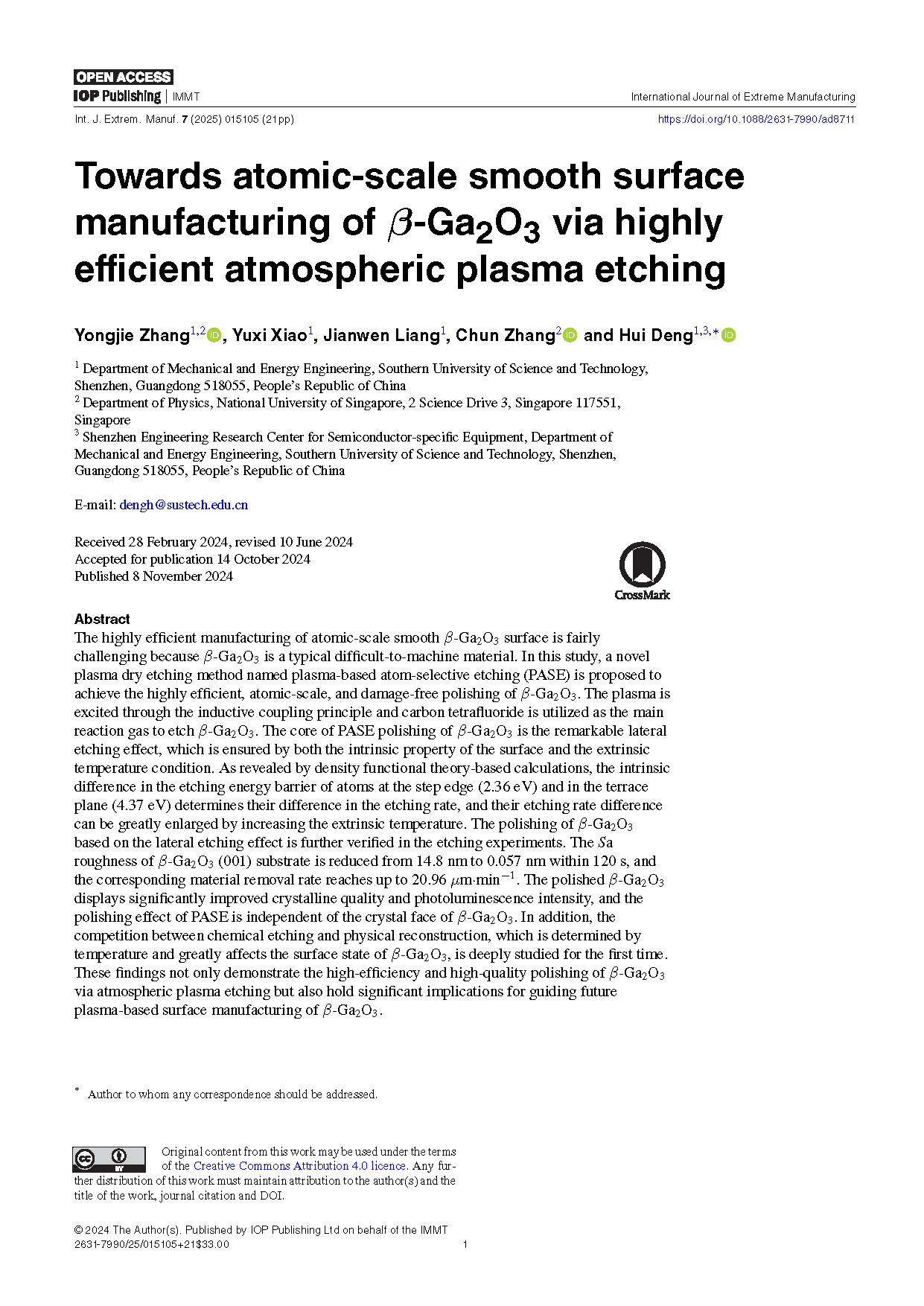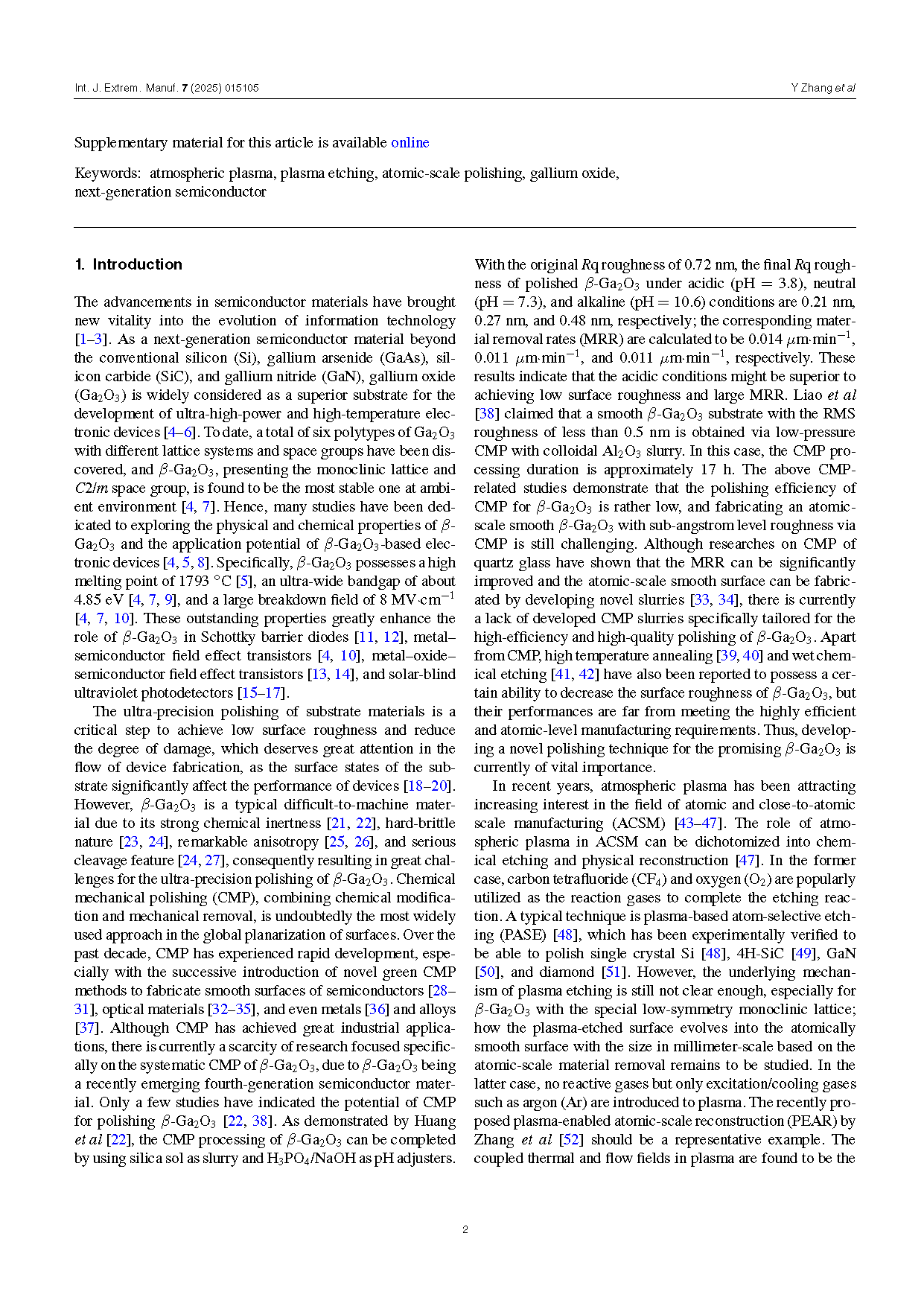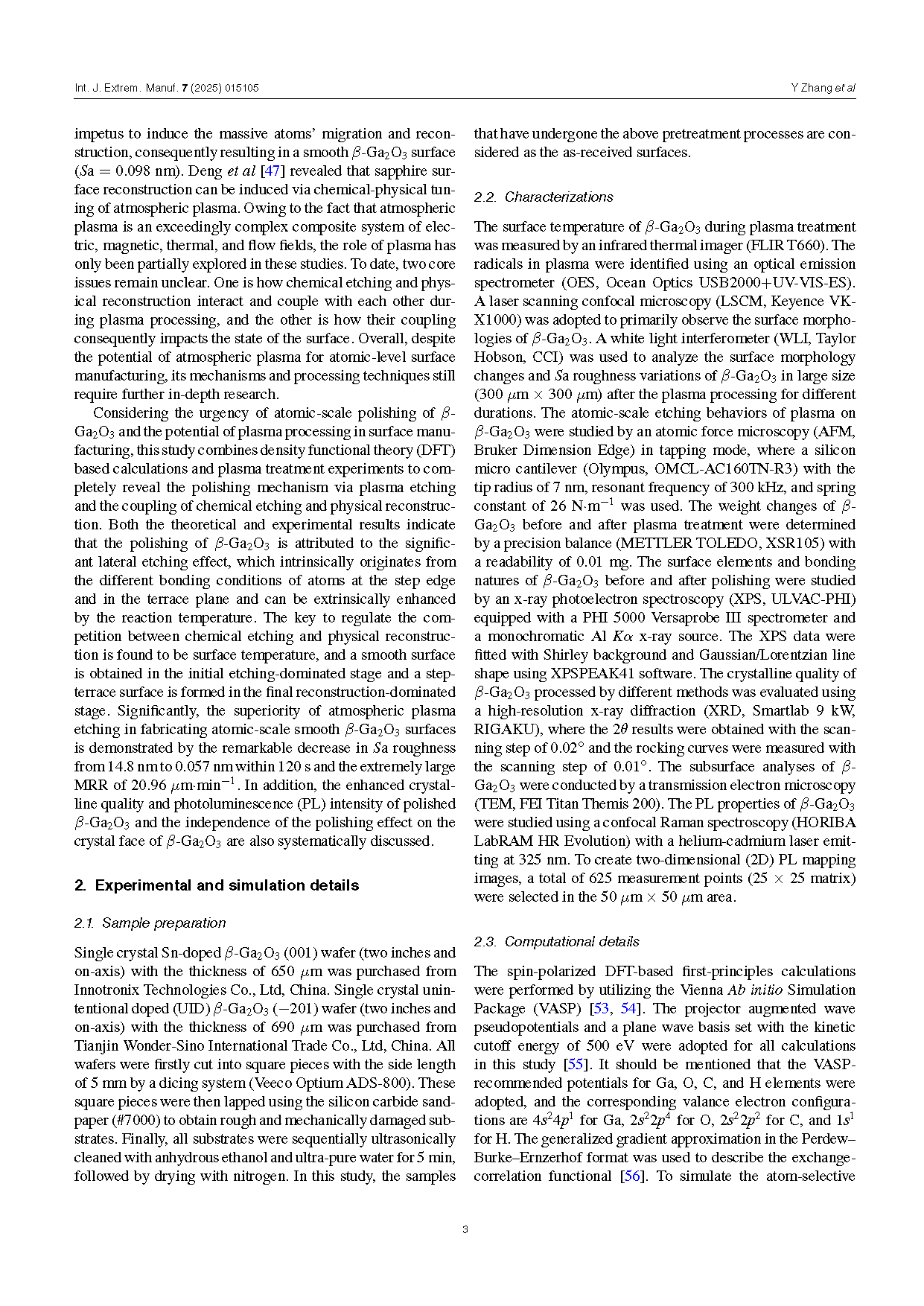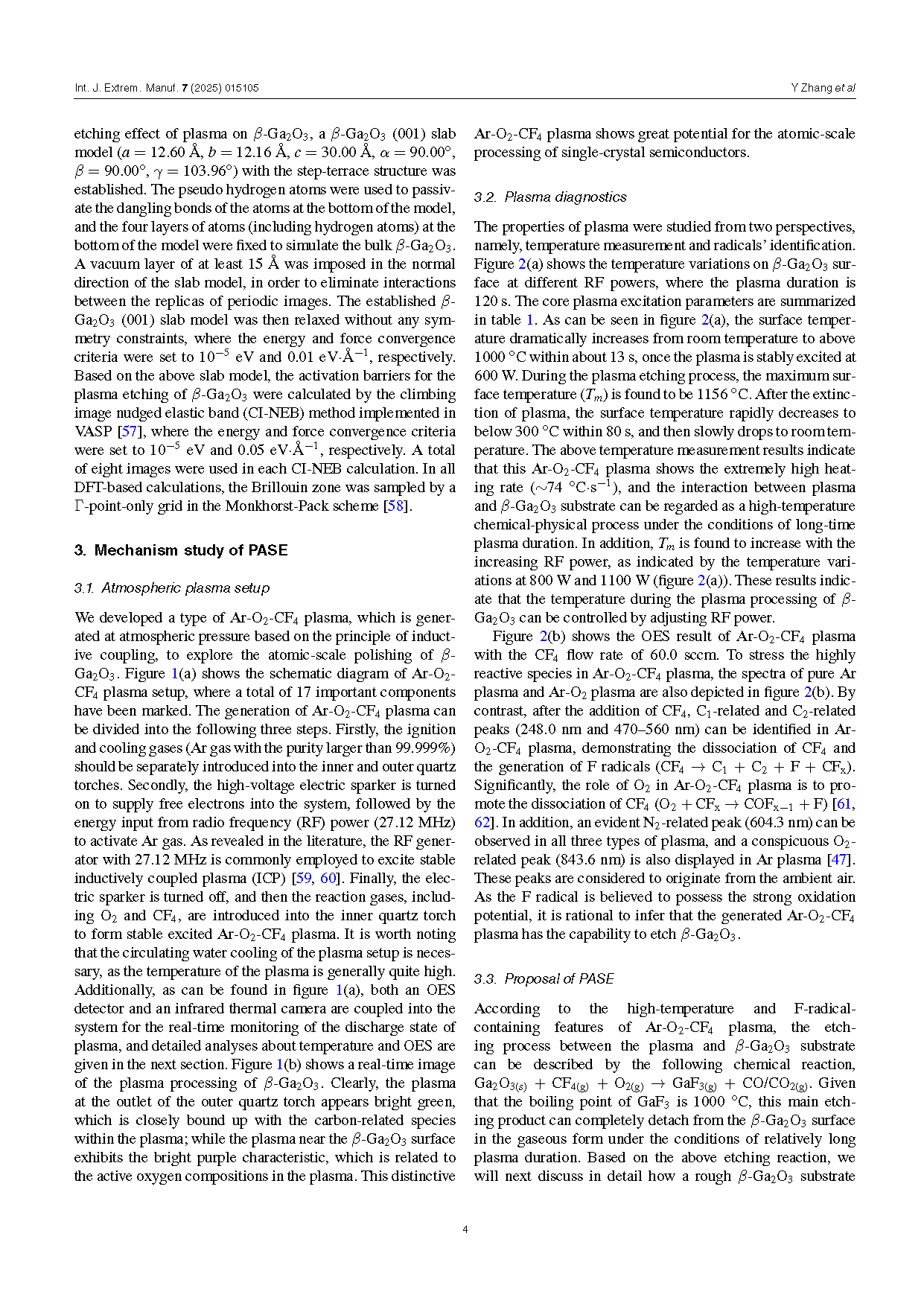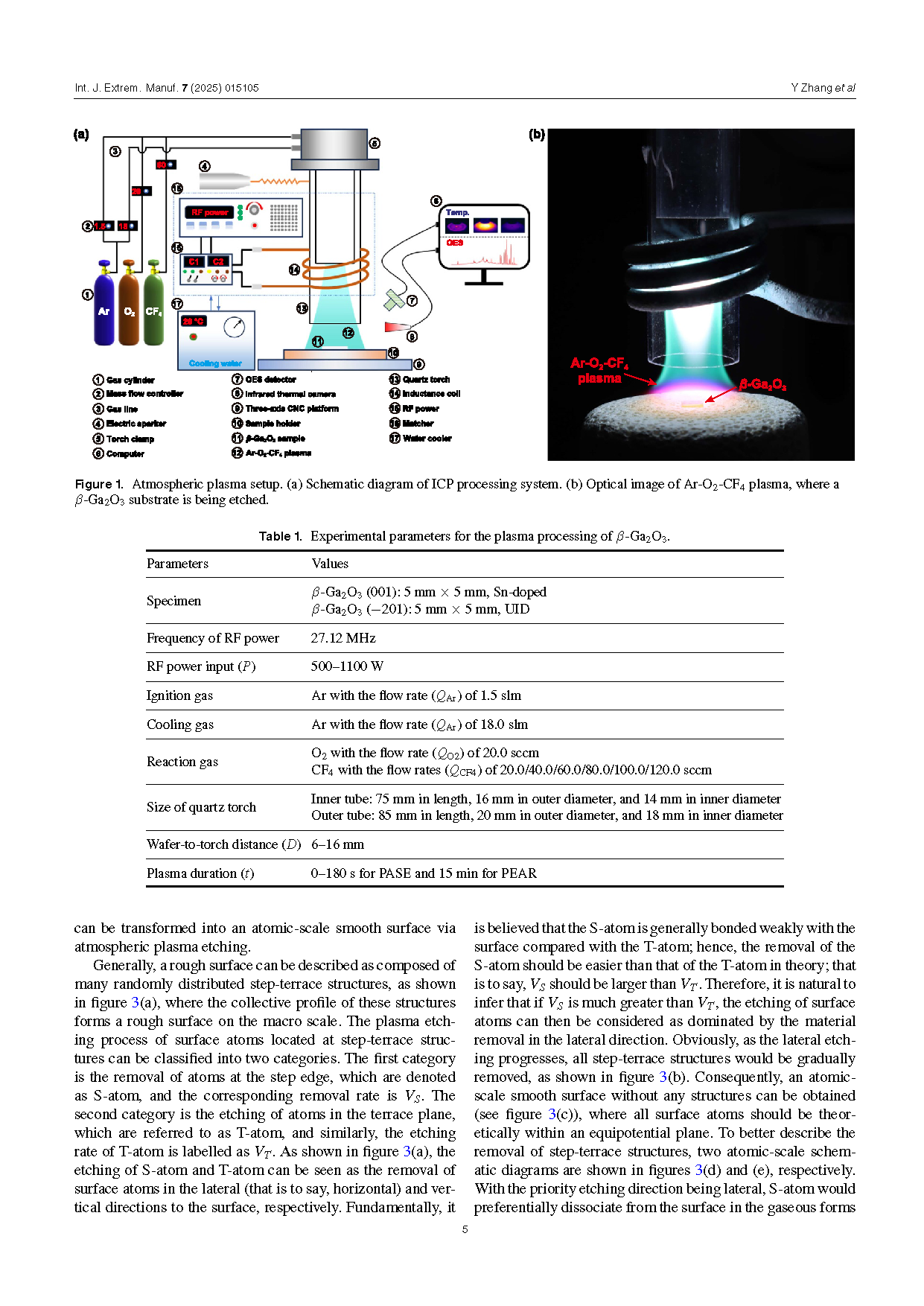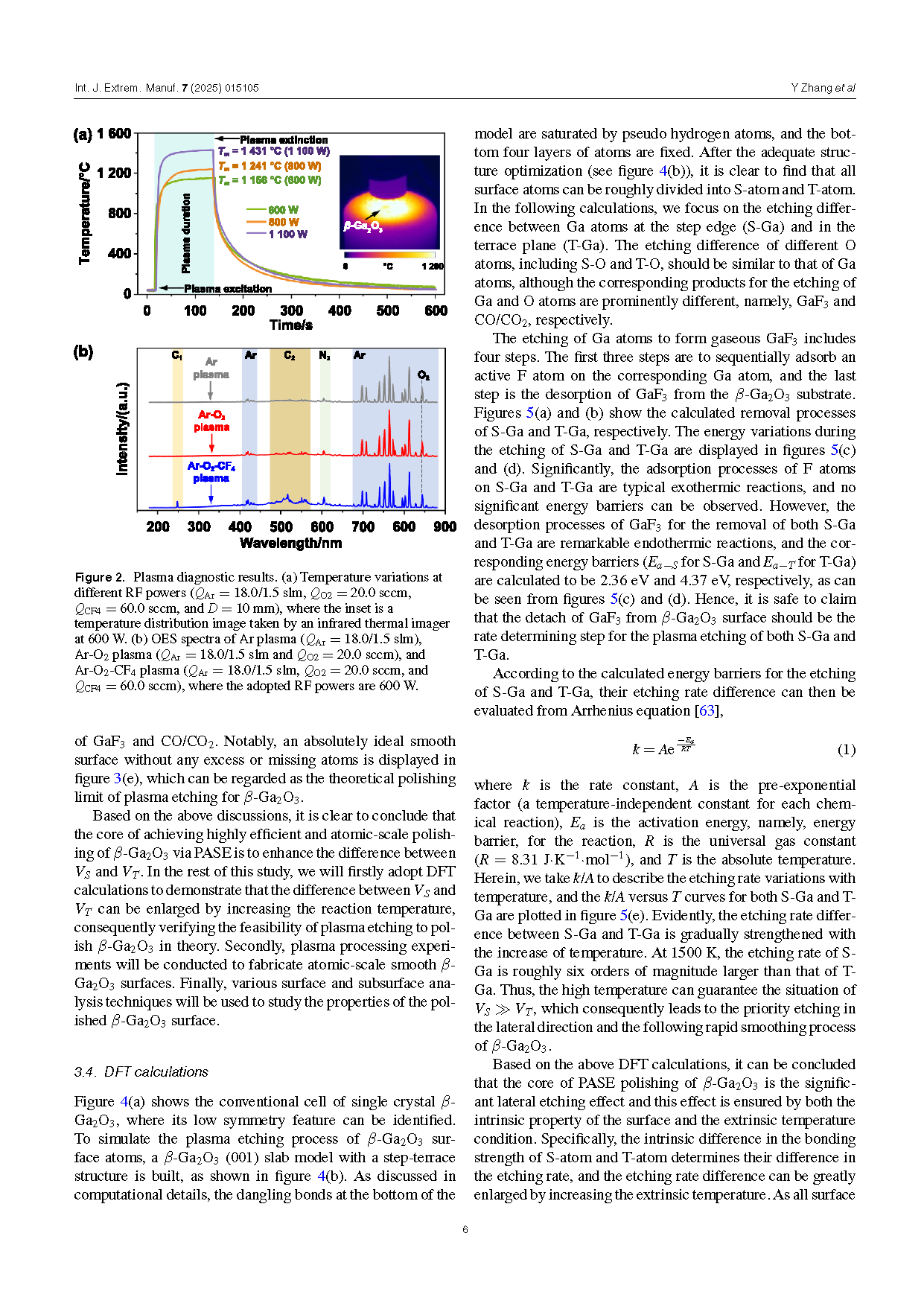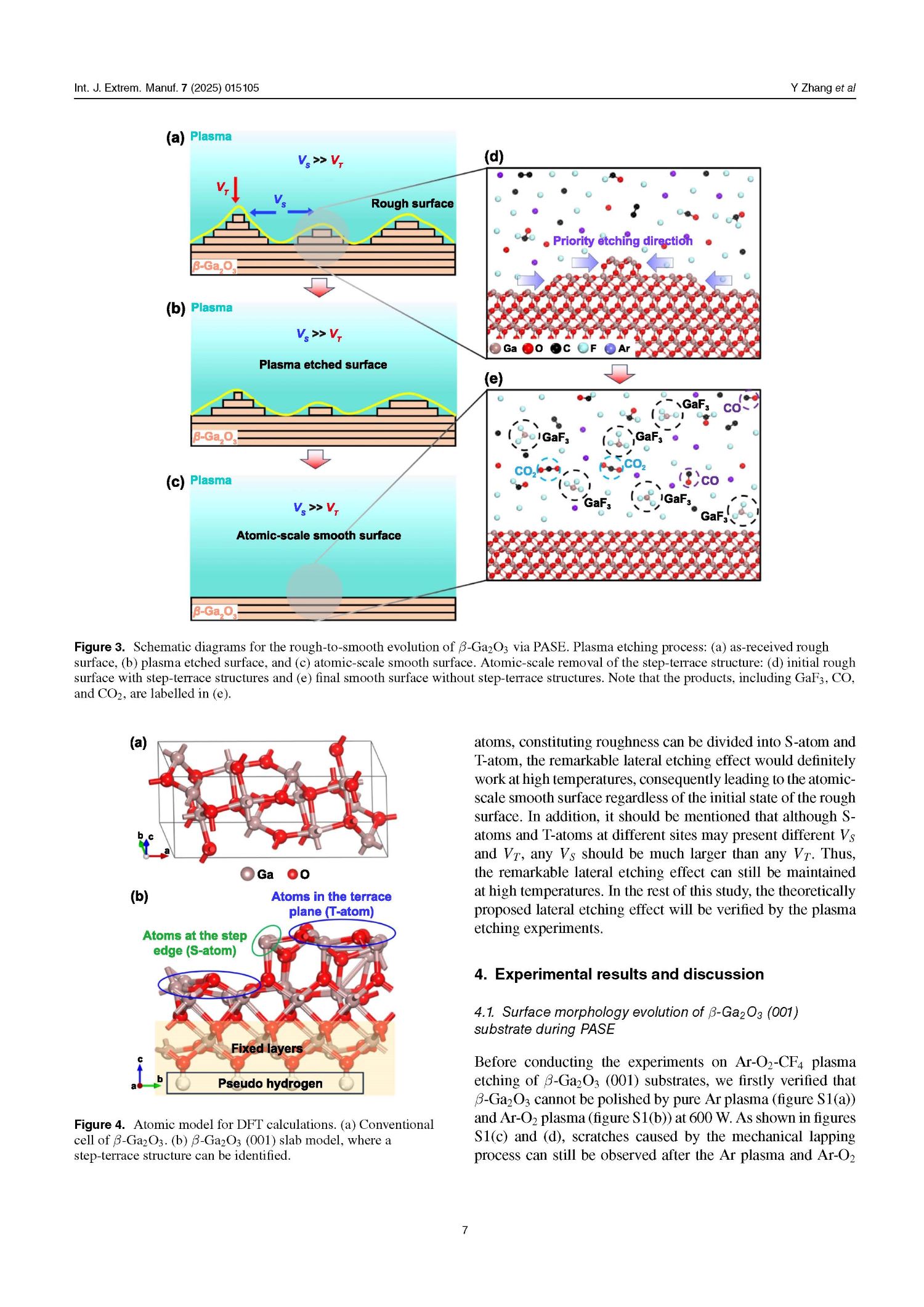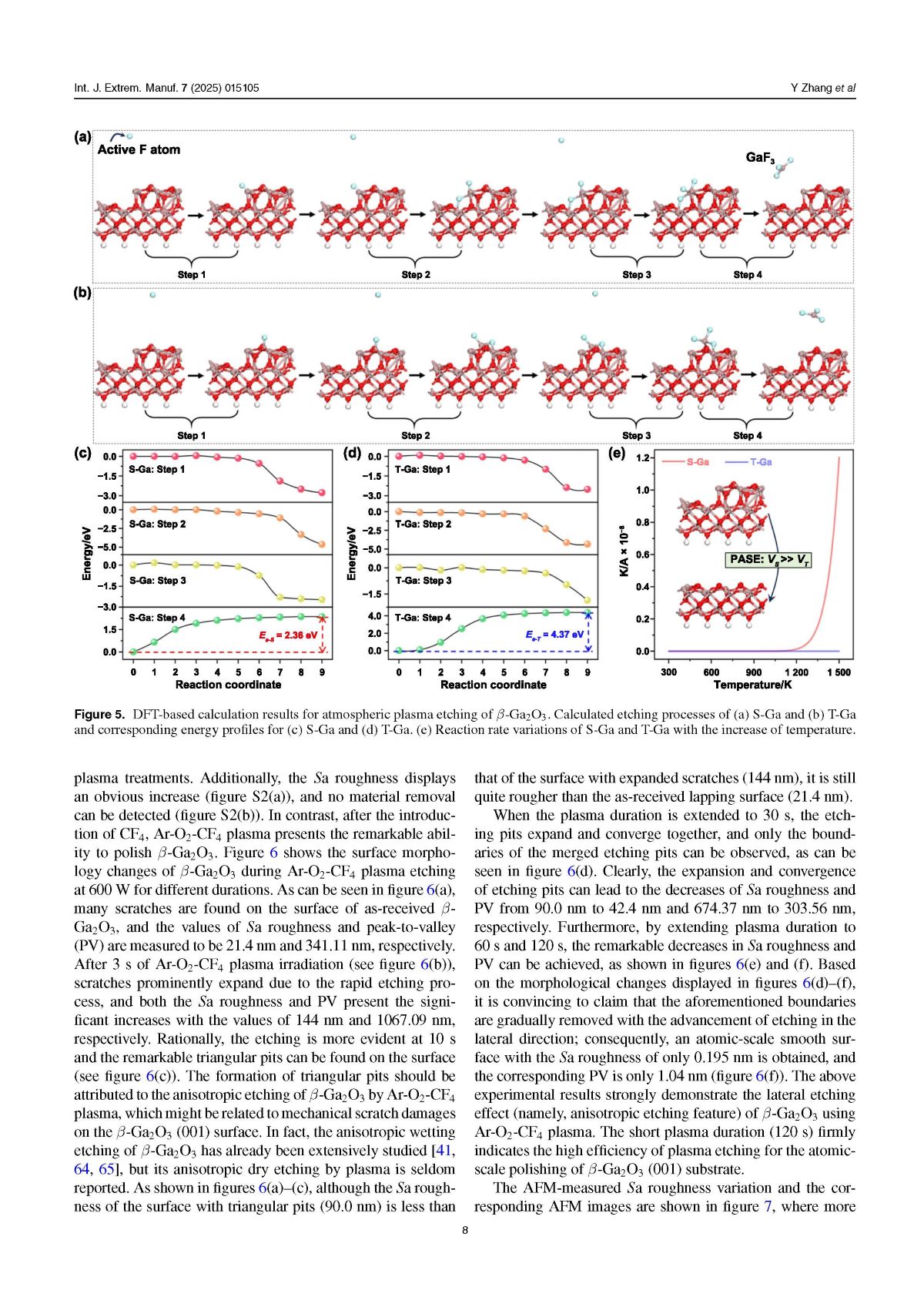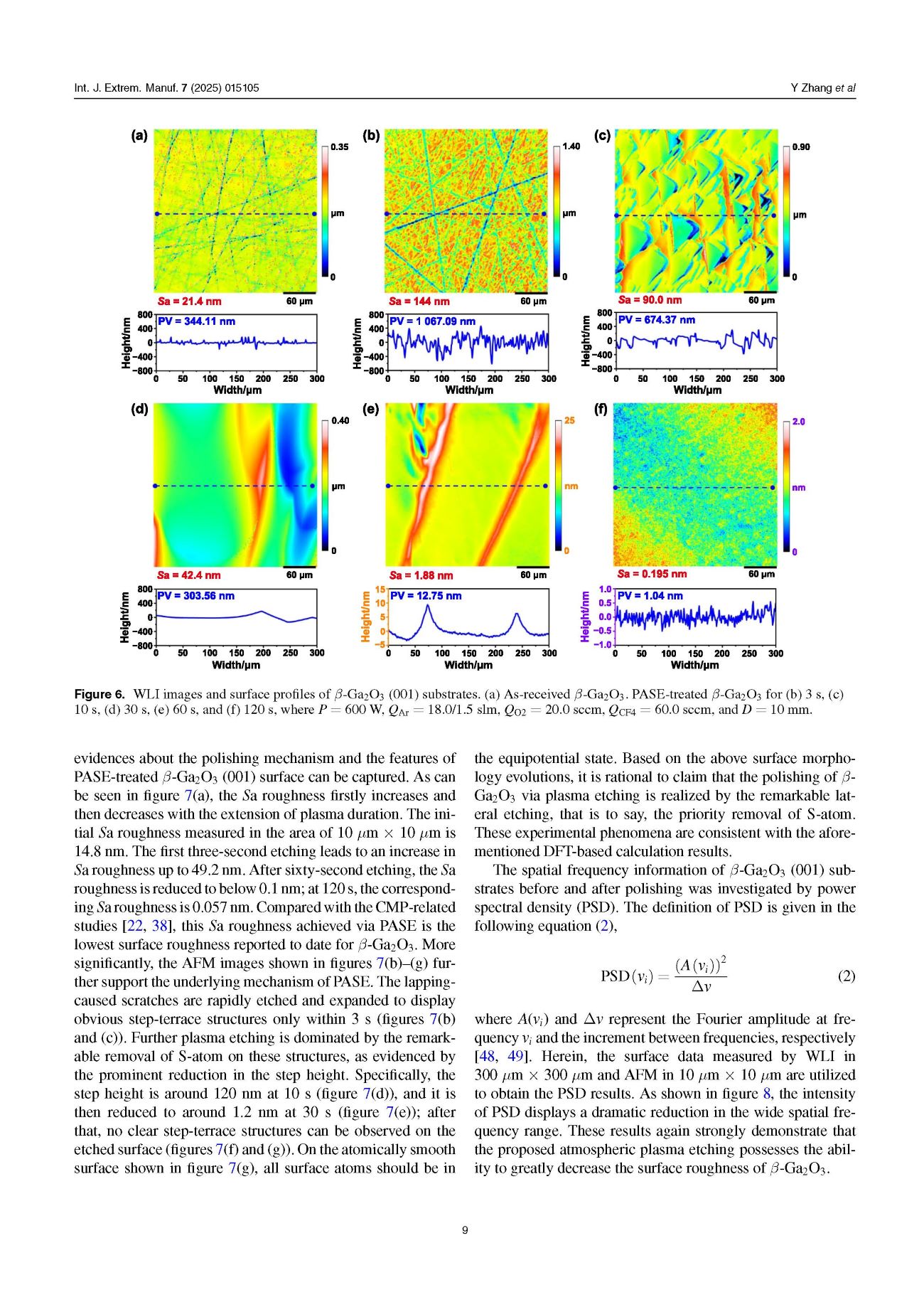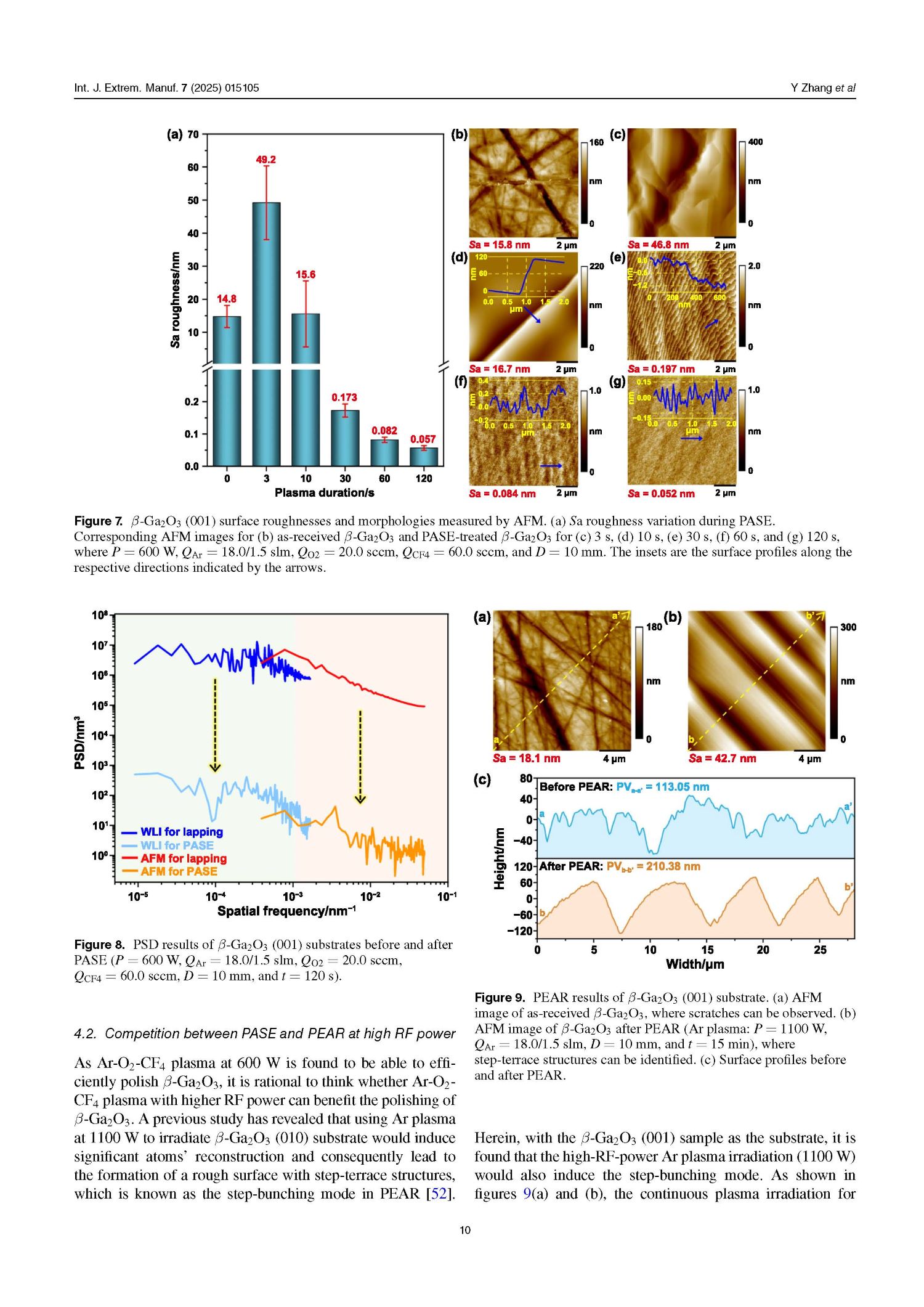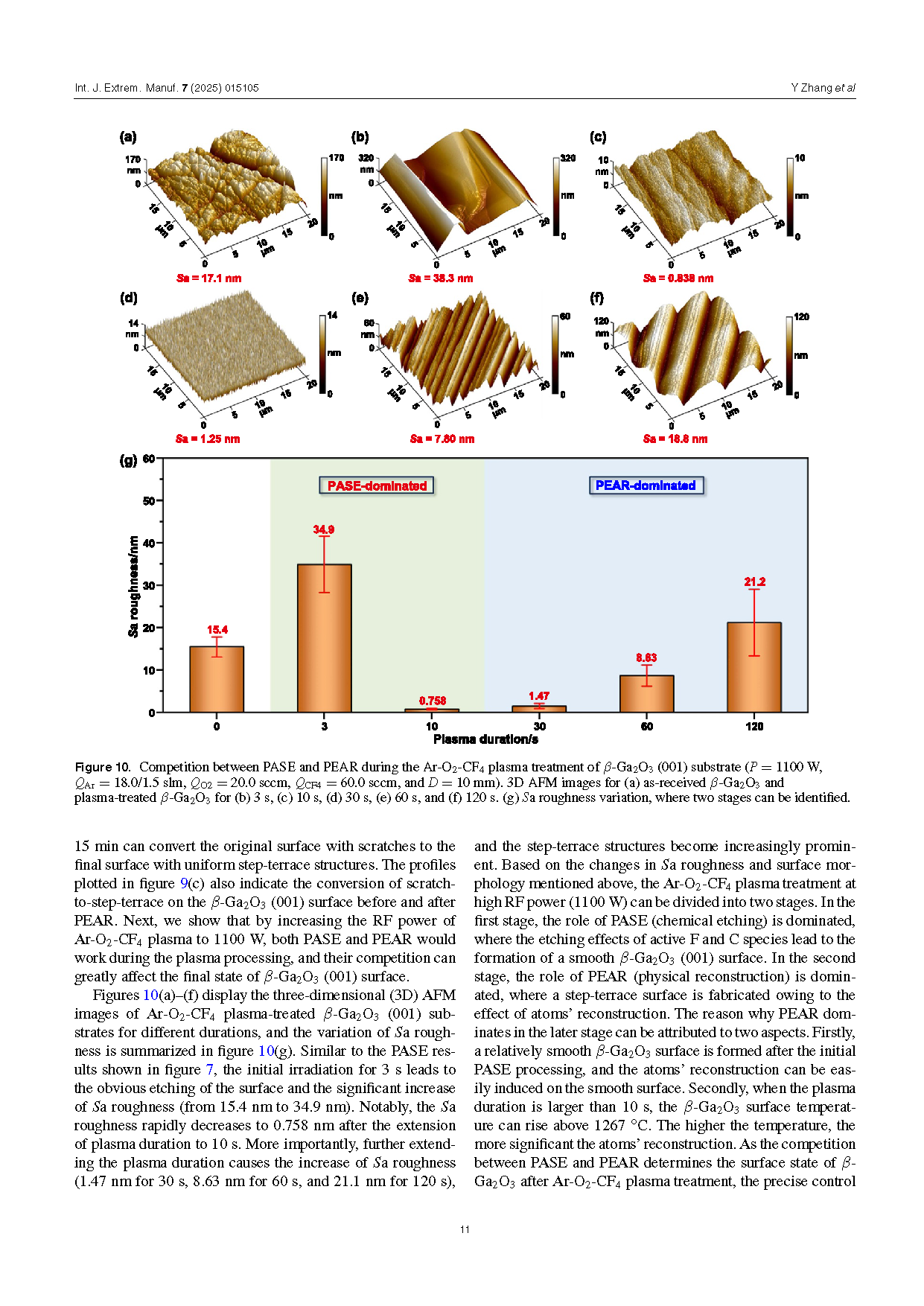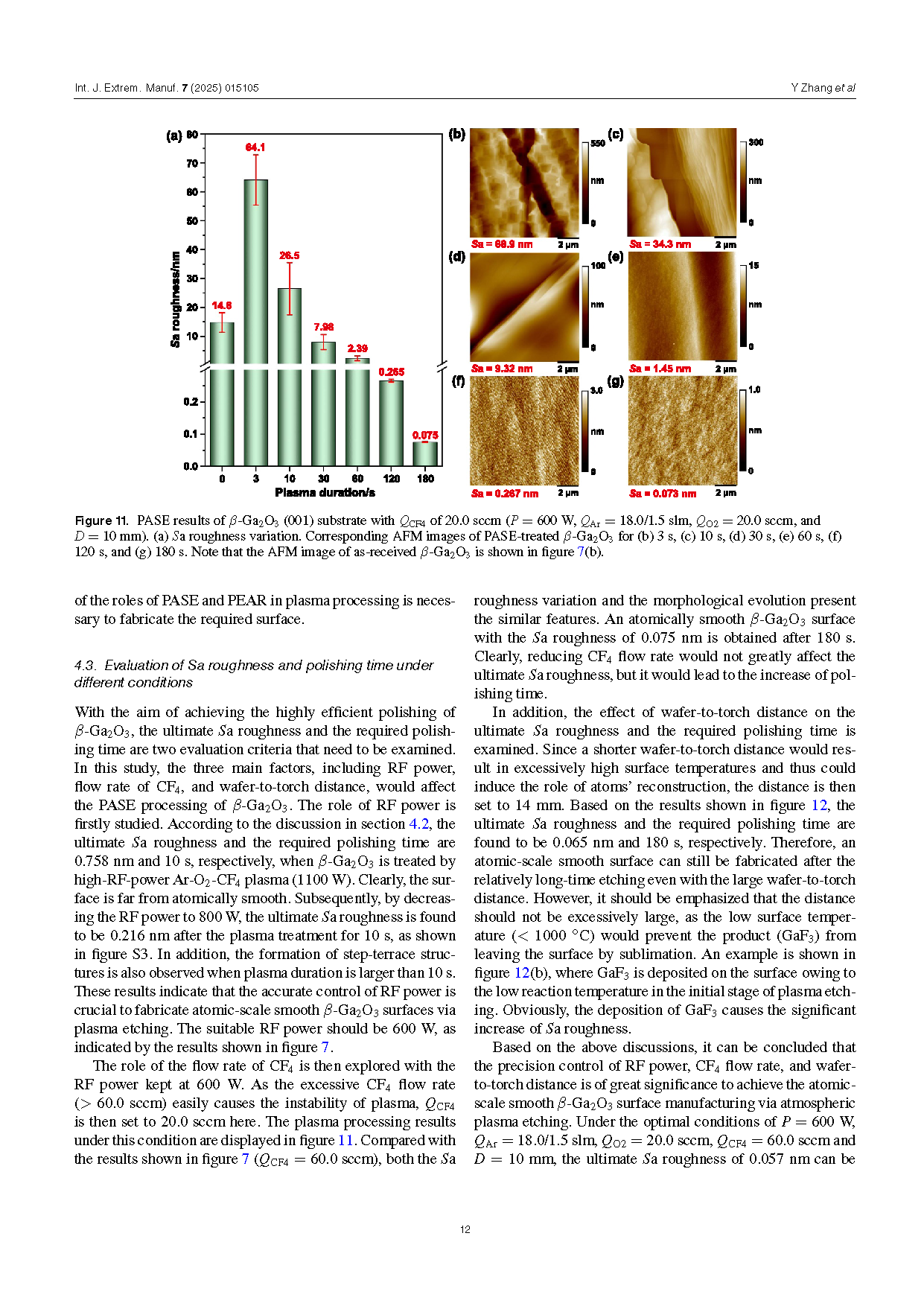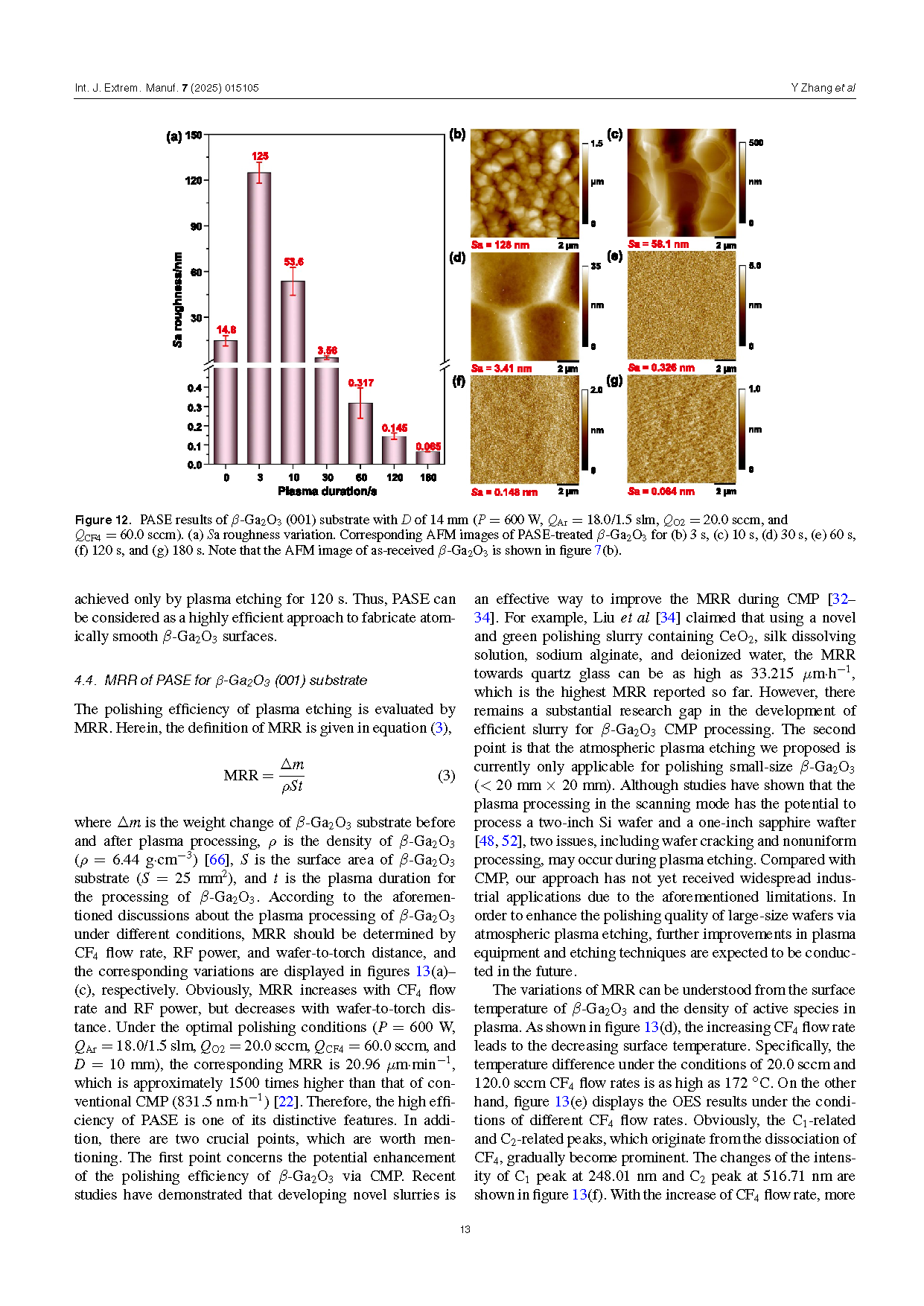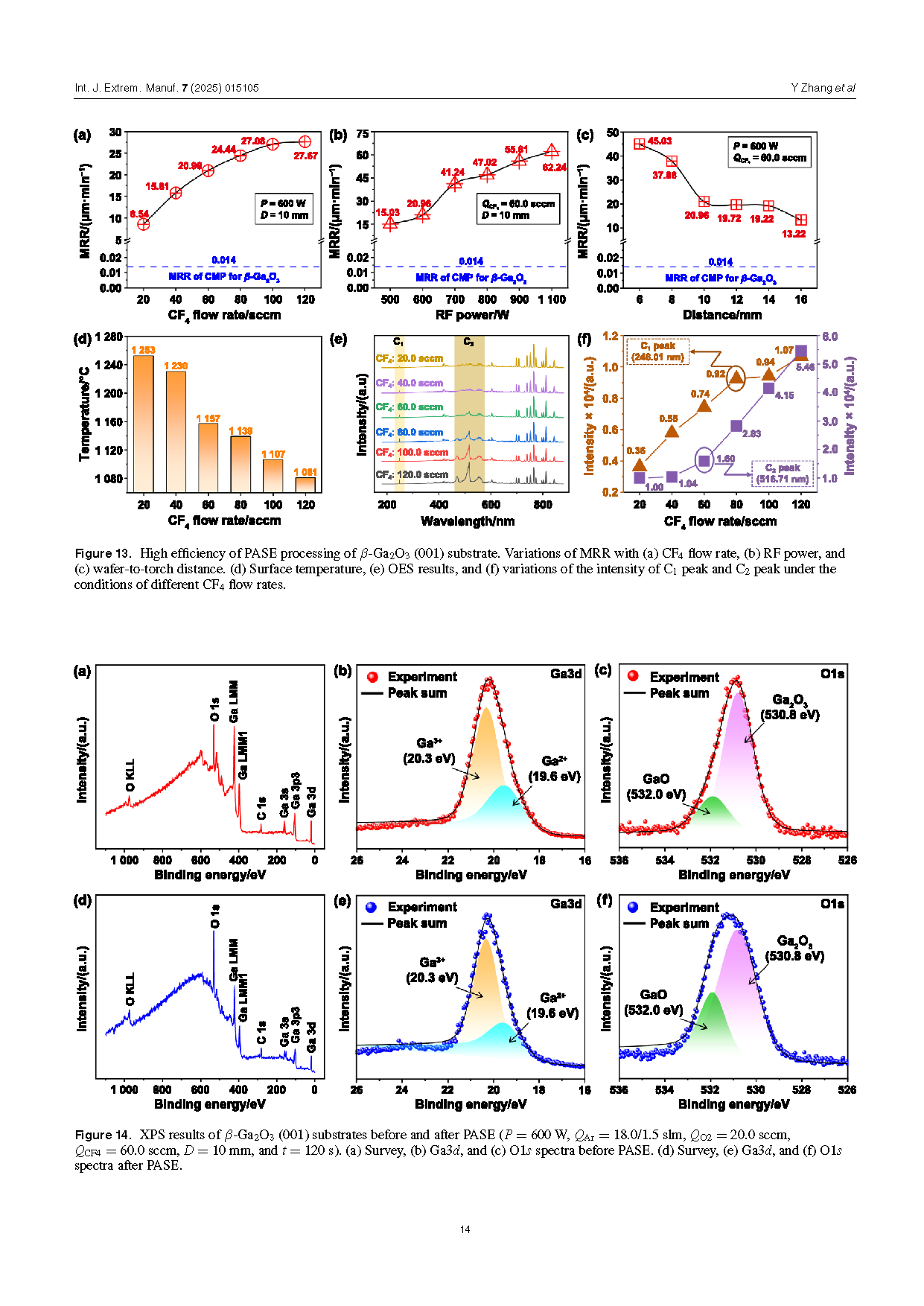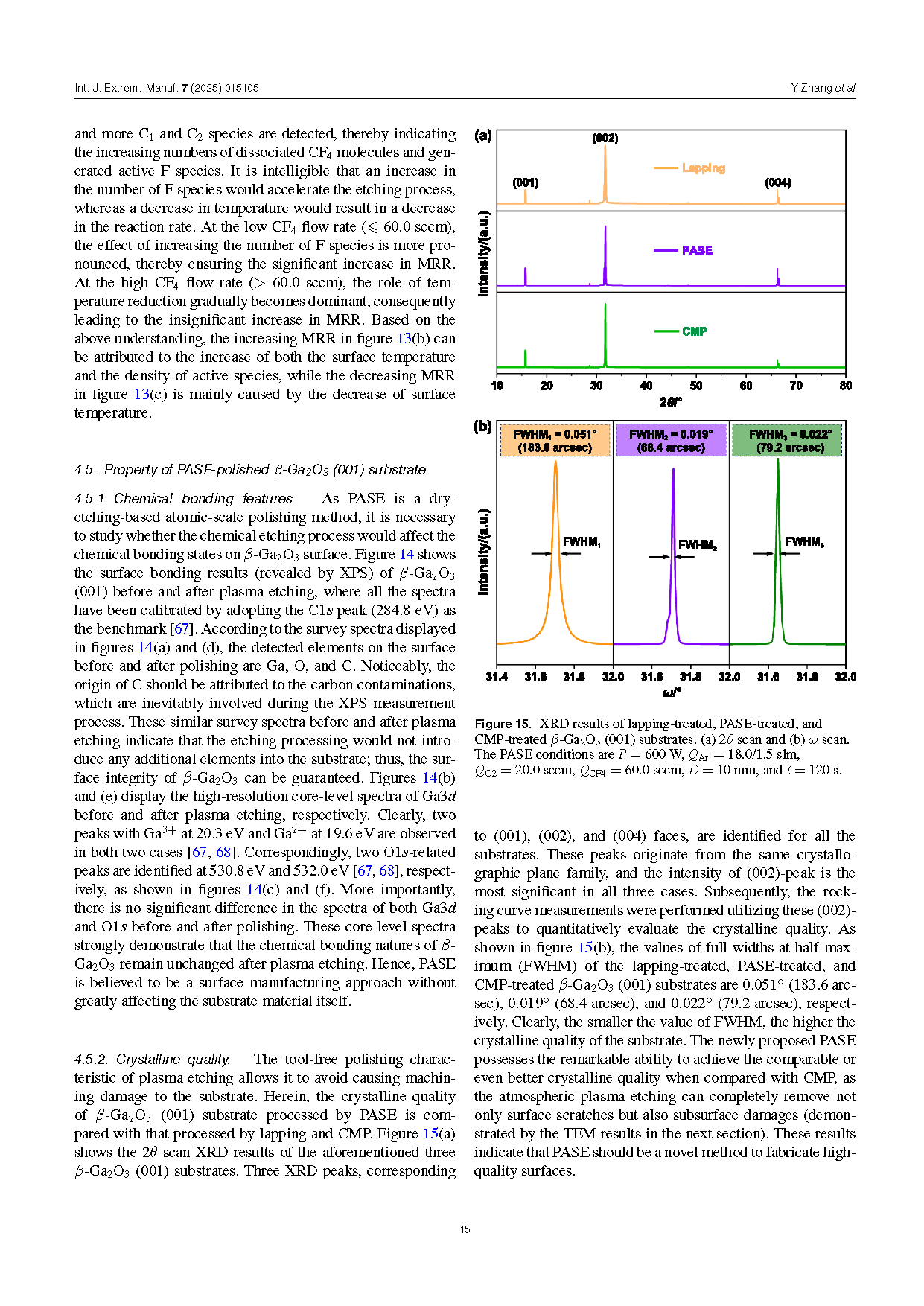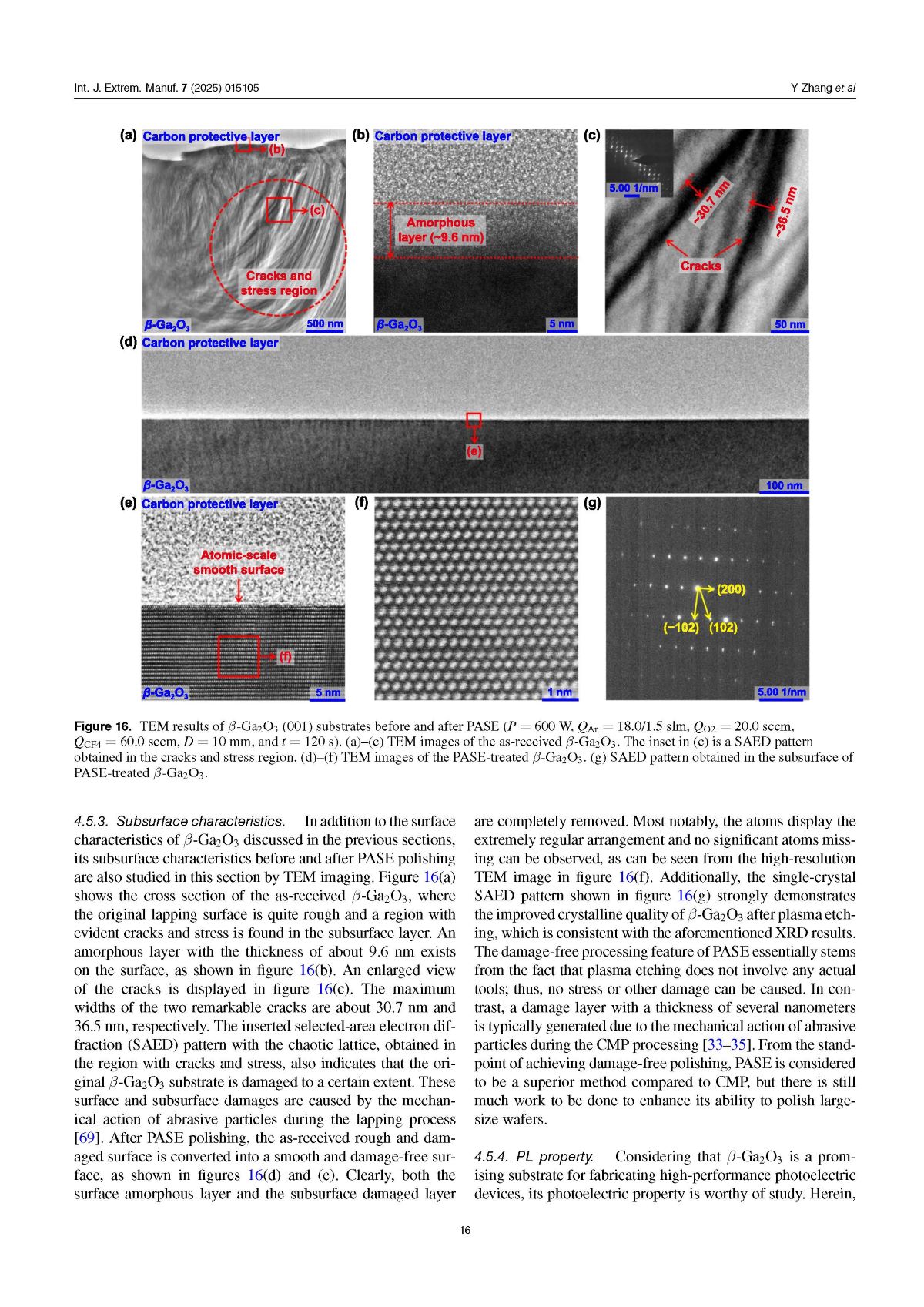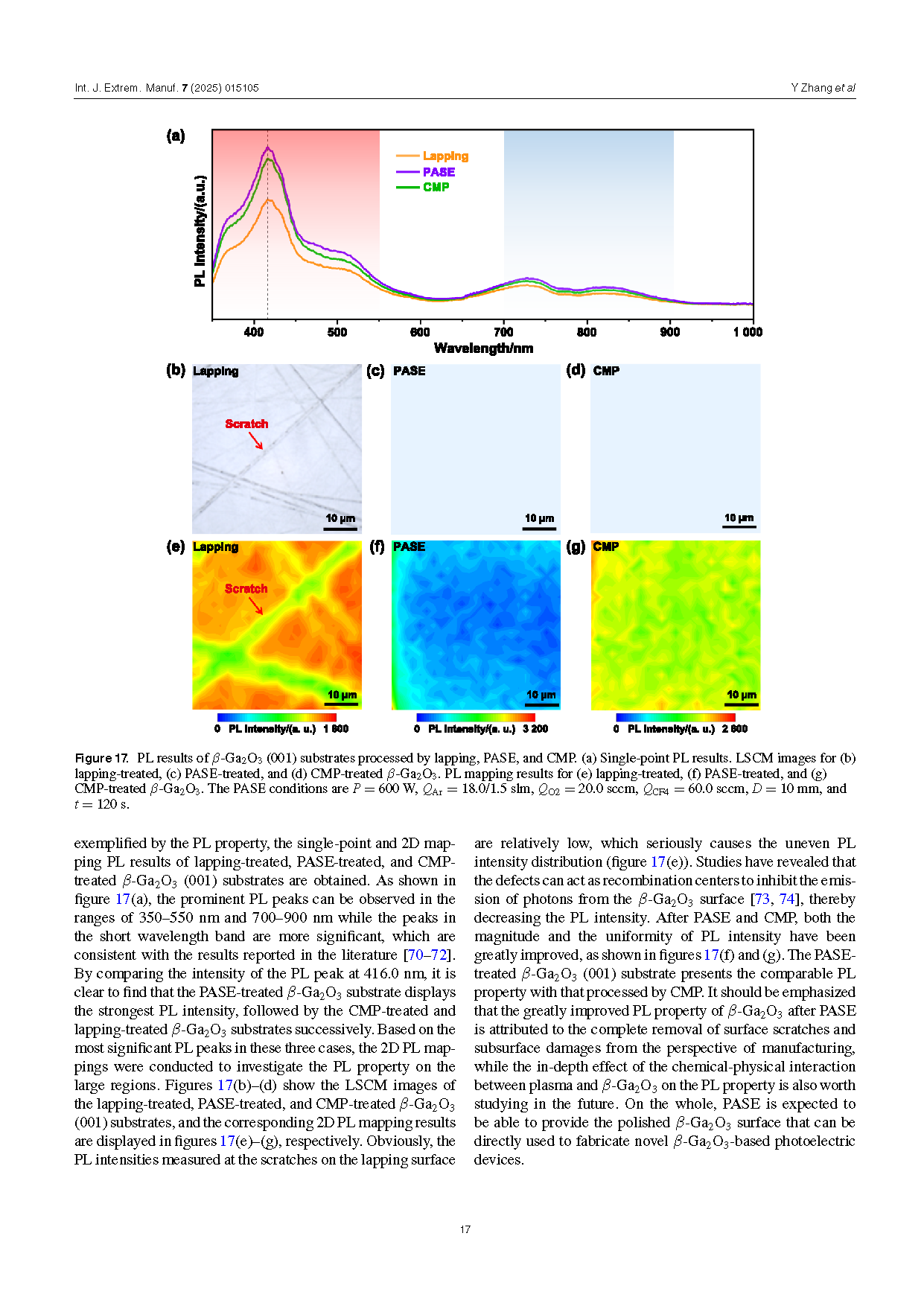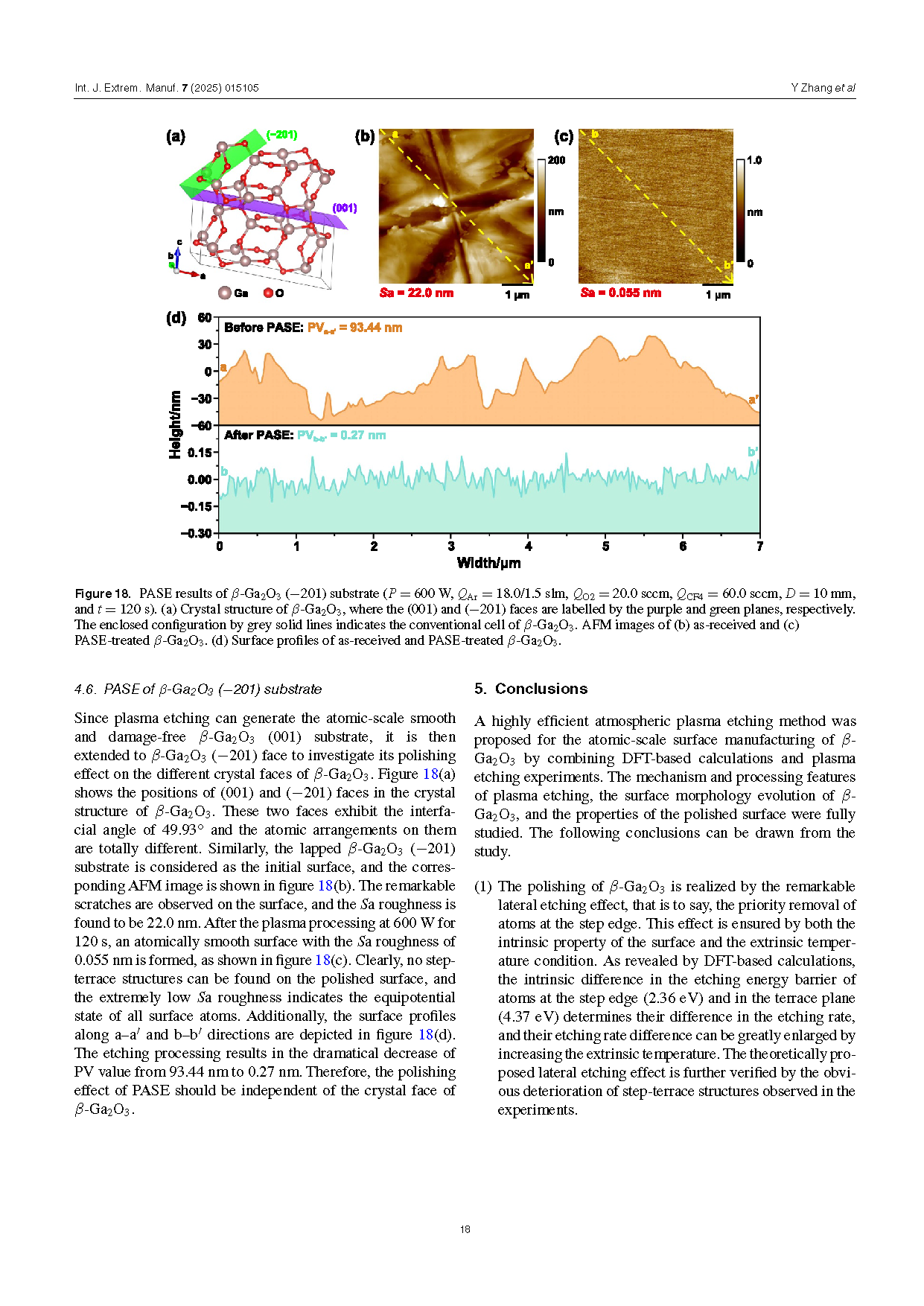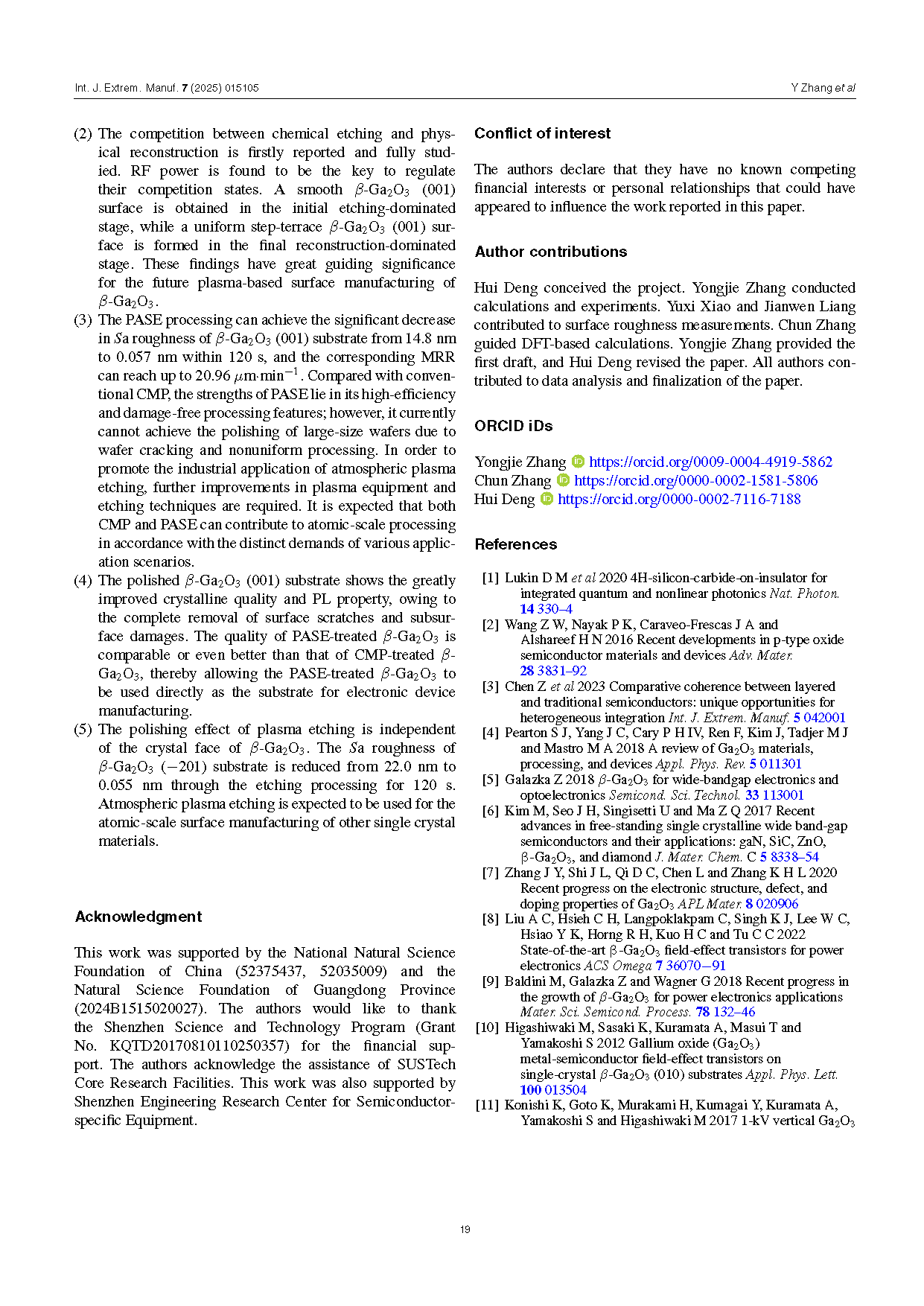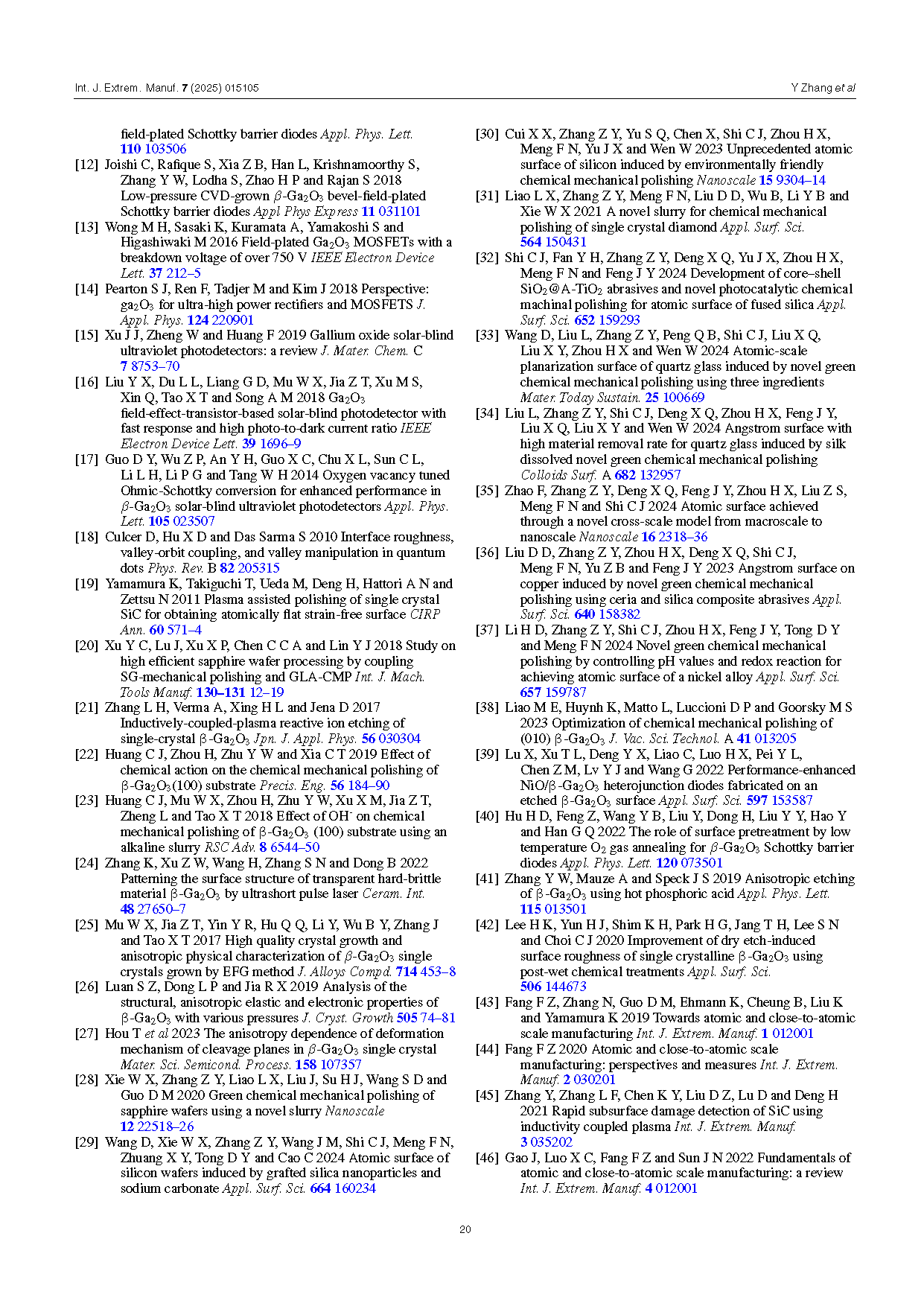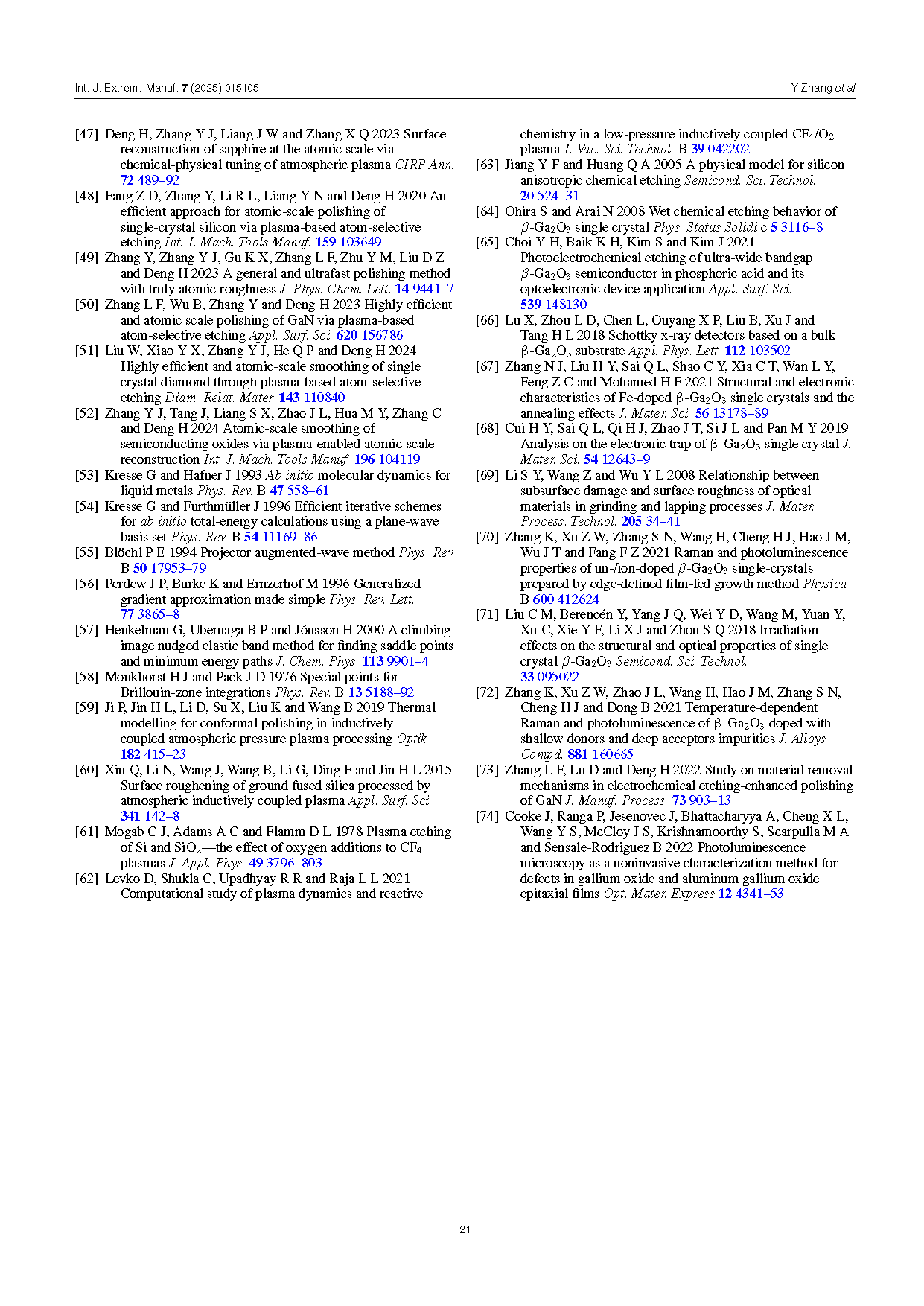
【Member Papers】Towards atomic-scale smooth surface manufacturing of β-Ga₂O₃ via highly efficient atmospheric plasma etching
日期:2024-12-26阅读:563
Researchers from the Southern University of Science and Technology have published a dissertation titled "Towards atomic-scale smooth surface manufacturing of β-Ga2O3 via highly efficient atmospheric plasma etching" in International Journal of Extreme Manufacturing.
Abstract
The highly efficient manufacturing of atomic-scale smooth β-Ga2O3 surface is fairly challenging because β-Ga2O3 is a typical difficult-to-machine material. In this study, a novel plasma dry etching method named plasma-based atom-selective etching (PASE) is proposed to achieve the highly efficient, atomic-scale, and damage-free polishing of β-Ga2O3. The plasma is excited through the inductive coupling principle and carbon tetrafluoride is utilized as the main reaction gas to etch β-Ga2O3. The core of PASE polishing of β-Ga2O3 is the remarkable lateral etching effect, which is ensured by both the intrinsic property of the surface and the extrinsic temperature condition. As revealed by density functional theory-based calculations, the intrinsic difference in the etching energy barrier of atoms at the step edge (2.36 eV) and in the terrace plane (4.37 eV) determines their difference in the etching rate, and their etching rate difference can be greatly enlarged by increasing the extrinsic temperature. The polishing of β-Ga2O3 based on the lateral etching effect is further verified in the etching experiments. The Sa roughness of β-Ga2O3 (001) substrate is reduced from 14.8 nm to 0.057 nm within 120 s, and the corresponding material removal rate reaches up to 20.96 μm·min−1. The polished β-Ga2O3 displays significantly improved crystalline quality and photoluminescence intensity, and the polishing effect of PASE is independent of the crystal face of β-Ga2O3. In addition, the competition between chemical etching and physical reconstruction, which is determined by temperature and greatly affects the surface state of β-Ga2O3, is deeply studied for the first time. These findings not only demonstrate the high-efficiency and high-quality polishing of β-Ga2O3 via atmospheric plasma etching but also hold significant implications for guiding future plasma-based surface manufacturing of β-Ga2O3.

Figure 1. Atmospheric plasma setup. (a) Schematic diagram of ICP processing system. (b) Optical image of Ar-O2-CF4 plasma, where a β-Ga2O3 substrate is being etched.
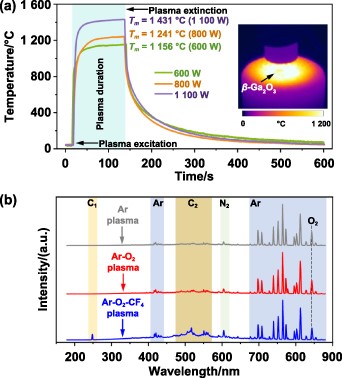
Figure 2. Plasma diagnostic results. (a) Temperature variations at different RF powers (QAr = 18.0/1.5 slm, QO2 = 20.0 sccm, QCF4 = 60.0 sccm, and D = 10 mm), where the inset is a temperature distribution image taken by an infrared thermal imager at 600 W. (b) OES spectra of Ar plasma (QAr = 18.0/1.5 slm), Ar-O2 plasma (QAr = 18.0/1.5 slm and QO2 = 20.0 sccm), and Ar-O2-CF4 plasma (QAr = 18.0/1.5 slm, QO2 = 20.0 sccm, and QCF4 = 60.0 sccm), where the adopted RF powers are 600 W.
DOI:
doi.org/10.1088/2631-7990/ad8711
